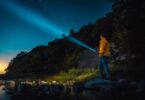Phones are not only a common part of our daily life but also an insanely important part of them. It’s easy to forget just how many things our phones allow us to do yet it’s most apparent when we forget them. Worse yet is when we get into a horrible situation where the phone gets lost. It’s twice as bad if it gets lost somewhere in the wilderness where most retrieval services may have a tougher time locating it. That’s why today we are looking at how you can protect your phone during a hiking trip.
Practice consistency
One of the most frequent ways people lose their phone is by simply forgetting to put them in the right place. Either they completely forget to put them in their pocket or end up putting them in an unsafe place. This goes for any type of phone and any situation but during a hike, it can become even more troublesome. Leaving a phone in some of the pockets that aren’t quite as safe for it can spell its doom.
For example, while most pant pockets will do fine accommodating smartphones, putting them there isn’t the safest option. During a hike, there are plentiful chances to get onto the rougher ground which can lead to accidents. While most of these accidents will be a simple trip that we regain our balance from easily, the phone may end up thrashing into something during it. This could lead to damage or, in the situation of rougher tripping accidents, loss of the phone. Overall, it’s not the best way to go about it.
Even if you have a safe place to put the phone, it won’t matter if some basic safety measures aren’t respected. It’s good to get acquainted with these and learn how to prevent possible loss of your phone as much as possible. We recommend checking keebos to learn how to not lose your phone.
Of course, you’ll have a better time holding up to these principles of safety if you are consistent with them. It pays to internalize them as much as possible.
Hip pockets

Source: cleverhiker.com
Your hiking backpack should have a hip pocket on it. After all, this pocket is made to store items that you may need on hand and allows you to store smaller items conveniently. Rather than unpacking the entire backpack when you need a single thing from it, you can simply slot it here.
This does present a decent location to slot the phone into. However, hip pockets aren’t really made to be optimal for phones. Specifically, they don’t quite fit modern smartphones. Over the years, our phones have become rather large taking up way too much space for a hip pocket. They can still fit vertically though. This does lead to a bit of a risky position for the phone as it is possible for the phone to slip out. Doubly so if your hip pocket is already struggling to contain the phone’s width.
Hip pockets should be a temporary solution during parts of the trek rather than the resolution to the entire problem. If you do put a phone in the hip pocket because you need to free your hands quickly, make sure to double-check if the item is still there once the task is done.
Some hip pockets may be deep or tight enough to provide a safer storage area but this is an exception rather than the rule. Do not get too lax with storing phones there.
Fanny packs
Fanny packs are probably the most reliable storage and carrying accessories on the market. They are simple and cheap with a ton of space for just about anything. Not only that, there are fanny packs that are specifically made to be used by hikers. With a fanny pack, you can easily store a phone without worry. It’s properly padded to prevent any smaller impacts from the outside while also being large enough to accommodate even the biggest of smartphones.
These fanny packs can also be used for other items you are scared of losing. Car keys and wallets are easy enough to put in while also being possible to separate from the phone. If you are somebody who likes to stock themselves full of trinkets and snacks, fanny packs are perfect. After all, hiking can take a while and it’s always nicer to have some of these on hand. Be careful to not fill the fanny pack too much though. It can become hard to utilize once it is fully stacked.
The last thing you should ask yourself is whether the fanny pack will obstruct you. Some people do not like the extra weight it brings. Others simply don’t find it comfortable to have an extra bag on the front of their body. For those people, there are other safe ways of storing the phone. For others, fanny packs are the way to go.
Put them in the backpack

Source: shape.com
Sometimes the best solution is the most obvious one. Putting your phone in one of the more barren yet large pockets of the backpack is an optimal way to protect it. The phone cannot fall out of the zippered pocket and the thick pockets will usually save it from any outwards damage. The big pockets are also not a bad idea if you aren’t stocking them full of potentially harmful items. Even then, a protective foil or a phone case can help negate potential harm from surrounding items.
Of course, while obvious, there are downsides to the backpack. The backpack will stay on our back for most of the trip and it isn’t as easy to navigate as other examples presented before. That’s why you should use the bigger parts of the backpack only if the phone won’t be necessary at all during the trip. In that situation, this is a great place to keep the phone but it doesn’t mean you shouldn’t keep it in mind. The phone could end up descending onto the bottom of the backpack. If it does, putting the bag down or sitting on it could compromise its safety.
Also, it’s good to remember to take out the phone once the hiking trip is over. We could end up losing it on our way home due to it falling out in some way. Additionally, we could misplace it when unpacking from the trip. Overall, it’s best to pay that extra attention and avoid stress later.







